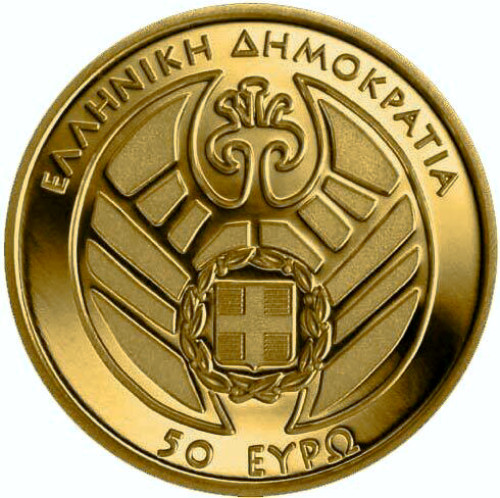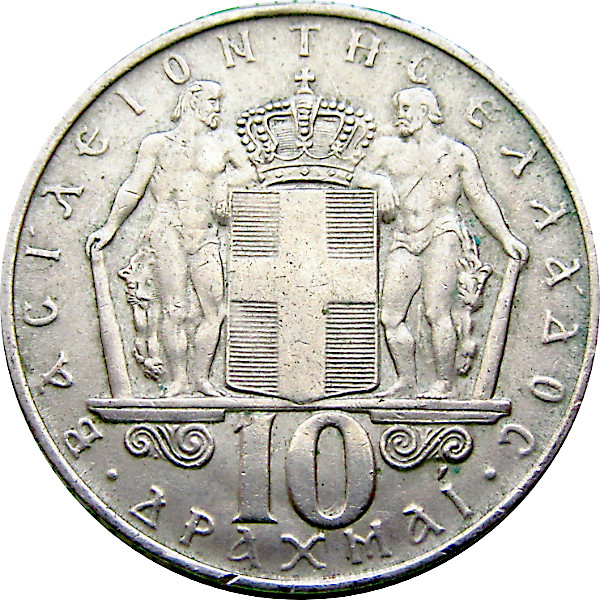The history of Greece and its coins is extensive indeed. Ancient Greek coins have long been the focus of attention from buyers and collectors all over the world. Modern Greece coins, too, have seen a lot of interest as well. Since the early 19th century, the history of collectible Greece coins has presented a lot of options for the modern-day collector. Like nearby countries such as Albania, North Macedonia, and Turkey, the coins of Greece tell an amazing numismatic story.
Around 1828, Greece broke away from the Ottoman Empire and became an independent nation. Finally, the country was able to mint several types of its own coins. The nation created a currency called the phoenix, but only one coin was made worth 1 phoenix, a silver coin in 1828. (Look for the currency name on the reverse of the coin in Greek: ΦΟΙΝΙΞ.) Each phoenix had a value of 100 copper lepta (written on coins in Greek as ΛΕΠΤΑ; the singular form, lepton, is ΛΕΠΤΌΝ).
More on MegaMinistore: Cyprus rare coins for collectors and other buyers
Greece coins and the drachma currency
In 1832, Greece introduced the drachma (ΔΡΑΧΜΗ; plural drachmai or ΔΡΑΧΜΑΙ). The national mint went on to create both silver coins and gold coins. Some Greece coins from this early modern era feature designs including ships, eagles, and wheat.
More about the drachma
The drachma originally dates from ancient times. Ancient Greece established the drachma currency and minted coins of bronze, copper, iron, and silver. These coins often depicted horses, sea turtles, birds, and bulls. Before 500 B.C., Greece coins also commemorated well-known leaders. Most coins had a weight of more than 2 grams. Many other countries began using Greek drachma coins, some for more than 500 years.
Coins of the Second Hellenic Republic 1924-1935
The Greek monarchy fell in 1924, and a republic known as the Second Hellenic Republic was formed. In 1926, Greece introduced coins that contain nickel, and these coins had multiple types of inscriptions. The Greek phrase ΕΛΛΗΝΙΚΗ ΔΗΜΟΚΡΑΤΙΑ was used on coins.
More on MegaMinistore: Finland coins: Suomi’s collectible numismatic history
The monarchy was re-established in 1935, and Greece became a military dictatorship. In 1941, several armies occupied Greece, and the country experienced hyperinflation. The nation was printing a large amount of paper currency, yet during this time period, the currency had a low value.
Greece was liberated in November 1944, and the country printed new drachmas that had a higher value. Many banks allowed the citizens to exchange the old currency, but most stores only accepted the new drachmas. The name of the country on drachma and lepta coins was now ΒΑΣΙΛΕΙΟΝ ΤΗΣ ΕΛΛΑΔΟΣ.
Greece coins from the mid-20th century
In 1953, Greece modified its monetary system and revalued the currency. Subsequently, some Greece coins contained aluminum. This metal substantially reduced the weight of the coins, yet the aluminum also prevented corrosion, reduced the effects of moisture, and increased the long-term value of the coins.
Browse 189 current Greece coins for sale offers here
In the 1960s, Greece introduced coins made of silver, and these coins had a value of 20 drachmas. Some coins featured portraits that commemorated the king of Greece, while other coins honored national heroes.

The country redesigned many coins in the 1980s, and the National Bank of Greece minted coins that contain nickel. At this time, the plural form drachmai was changed to drachmes – look for ΔΡΑΧΜΕΣ on coins of this era.
Italy coins: Guide to collecting the coins of Italia
Greece euro coins 2002-
In January 2002, Greece began to use euros, and the National Bank of Greece produced eight new coins. Smaller denominations were marked as being both euro cents and lepta. Euro coins were not denominated in drachmes, but did feature both the English word EURO and the Greek version, ΕΥΡΩ.
Gold and silver proof Greece coins
Greece has continued to design and mint special commemorative silver and gold euro coins for collectors and investors. With face values from 10 euro to 200 euro, Greece coins of this type often feature Greek and English, or only Greek, writing on them. The designs are creative and original, often striking and bold and even playful. Subject are diverse, ranging (for example) from Olympic games to Socrates to important Greek archaeological sites.
Albania coins collecting guide: Lekë, franga ari and more
A collection of these gold and silver proof coins, while it may take a while to build due to the rarity and value of them, can be an amazing look at one of Europe’s most important and satisfying numismatic corners.










